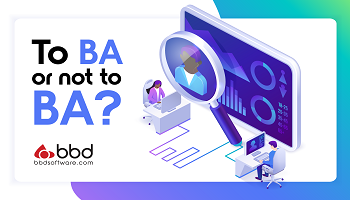The Better Meeting Manifesto – Stop Having Terrible Meetings!
Terrible meetings are an unfortunate feature of modern working life. It doesn’t have to be this way: read on to find out how you can take a stand and achieve better meetings for all!
Encountering a terrible meeting in the wild
Most of us have suffered through a terrible meeting. You know the scenario. A group has assembled in an airless meeting room in response to a calendar invitation. The AV equipment is faulty, so the unlucky person with the controls has spent the past 10 minutes trying to connect to the remote attendees. Everyone else is making small talk or discussing the previous meeting. When the equipment finally cooperates, you all realise that the meeting organiser isn’t in attendance. Undeterred, you check the meeting invitation – only to find it unhelpfully blank. The group makes a valiant attempt to progress things; however, you can only get so far with the main person missing. The meeting finishes early; the group sighs and agrees to reconvene another day.
Then there is the alternative, more insidious variant. At first glance, things begin well: the meeting logistics are on point, the right people are in the room, and you received the outline ahead of time. Yet once the meeting starts, issues soon become apparent. There are too many items for discussion. Due to aggressive timeboxing, there is little scope for more than brief comments regarding each. People grow increasingly frustrated with the lack of opportunity for input, the schedule drifts, the meeting overruns and several agenda items are never reached. The group makes little progress; the attendees are sentenced to a re-match to address the same material the following week.
Regrettably, these experiences are far from rare. Is it little wonder, then, that we sometimes find it hard to get our stakeholders to make time in their diaries for yet another meeting?
Trojan horse meetings: a false solution
To combat meeting aversion, some session organizers resort to subterfuge. One such ploy is the classic Trojan horse maneuver: book meetings into the calendar under the guise of something more palatable. Often, the decoy is a workshop. For example, a document sign-off meeting might be billed as a ‘requirement sign-off workshop’, even though the session is less about facilitated qualitative review and more about sitting around a table together to agree that the ensuing work can proceed. A stakeholder interview to elicit information about a particular aspect of their role might appear in the calendar as a ‘process workshop’. A team meeting might become a ‘team workshop’, and so on.
Superficially, this tactic can bear fruit – at least in the short term. So why do people feel more positive about workshops over meetings?
- Meeting fatigue
The first reason is novelty, pure and simple. People want respite from busy calendars booked up with tedious and unproductive meetings. Workshops are attractive because they generally feature interactive activities instead of the usual dry discourse. Even the mere hint of this variety can suffice to lure stakeholders into believing they are in for a welcome change.
- Productivity by association
A workshop is a facilitated intervention that seeks constructive input from all attendees to achieve a defined output. In positioning their meeting as a workshop, the organiser aims to appropriate the qualities of focused, engaged participation and demonstrable productivity from the workshop format and confer them upon their meeting session.
Unfortunately, the aspiration of engagement and productivity will only get you so far. Without good facilitation, a meeting will still be terrible no matter how you dress it up. Worse: a bad ‘workshop-but-actually-a-meeting’ experience might harm your work by putting stakeholders off attending workshops in the future.
Advertisement
Another way
Rather than deflecting attention from the problem, it’s time to take a long, hard stare at the meetings in our lives. Faced with a wilderness of terrible meetings, how can we act to change things for the better, no matter which end of the calendar invitation we are on?
- Make meetings pointy
All meetings should have a clearly defined purpose and intended outcome. No point? No meeting.
As the organizer:
If you are responsible for setting up a meeting but cannot answer the questions ‘Why are we meeting?’ and ‘What should we have achieved by the end of the meeting?’, this is a sign that you should reconsider. Is a meeting necessary, or might there be another way to work with your stakeholders (e.g. using your organisation’s preferred collaboration tool)? Don’t be afraid to postpone or cancel a meeting if circumstances change.
As an attendee:
Your time is as valuable as anyone else’s. Invitations are not obligations. If you receive a vague meeting invitation, contact the organizer and politely ask them to clarify the meeting’s purpose. A helpful sentence to use is ‘Please could you confirm what will be covered in this meeting so that I can prepare?’ – it helps you sound engaged while also acting as a prompt for the organizer to step up their game.
- Energize and engage
Meetings can’t always be fun, but don’t make them any more painful than they have to be. Start with the intended outcome and take active responsibility for getting there.
As the organizer:
A great tip from BA guru Angela Wick is to ‘verb-noun’ your meeting titles to set the intention for the session outcome: instead of ‘Requirements Review Meeting’, try ‘Finalise Requirements for Procurement’. It instantly puts your attendees into a more active mode of thinking which will carry into the meeting itself. Set a clear schedule with realistic timings and manage the session actively to keep things on track. Don’t let people doze off: check in frequently with all attendees (particularly those attending remotely) to ensure that everyone feels involved and has the opportunity to provide input, even if it’s just a quick thumbs-up/thumbs-down vote.
As an attendee:
It might not be your meeting, but you are part of it – and its success or failure. Help things go smoothly by doing any necessary pre-work ahead of time and coming to the meeting prepared. Be fully present and listen actively – nobody wants to recap points made five minutes ago because you were not paying attention. Consider whether your comments contribute usefully to the intended outcome before speaking. Where you can, support the facilitator. For example, can you help by relaying remote attendees’ comments to the room?
- Master your meeting modes
Following the recent pandemic, many of us continue to work flexibly between the office and home; meetings now frequently mix face-to-face and remote attendance. These ‘hybrid’ sessions can be tricky to get right, but it’s not impossible. With a bit of planning, you can be a meeting mode superstar.
As the organiser:
Meet your stakeholders where they are. If people are uncomfortable with coming into an office space, forcing an in-person meeting will result in no-shows. Save face-to-face for the times you truly need it and focus on providing a good experience online for everything else. Be aware that attendees may decide to group up and attend online from the same room, so give specific instructions if your planned activities require each person to have separate access to a computer. Design for online: take full advantage of the synchronous and asynchronous collaboration tools available through the applications at your disposal. Get equipment warmed up in plenty of time, ready to get going when the meeting starts. And whatever you do: don’t apologise or make excuses! You’re about to lead a fantastic online session, after all.
As an attendee:
If you are attending in person, don’t forget to acknowledge and address any people attending remotely. As a remote attendee, be mindful of your audio input. Use a quality headset with a good microphone if you work in a shared office environment – and be prepared to mute yourself when you aren’t speaking to minimise disruption. Nothing is worse than hearing background noise or someone thundering away at their keyboard.
What tips and tricks have you found to tackle the tyranny of terrible meetings? I’d love to hear your thoughts!




